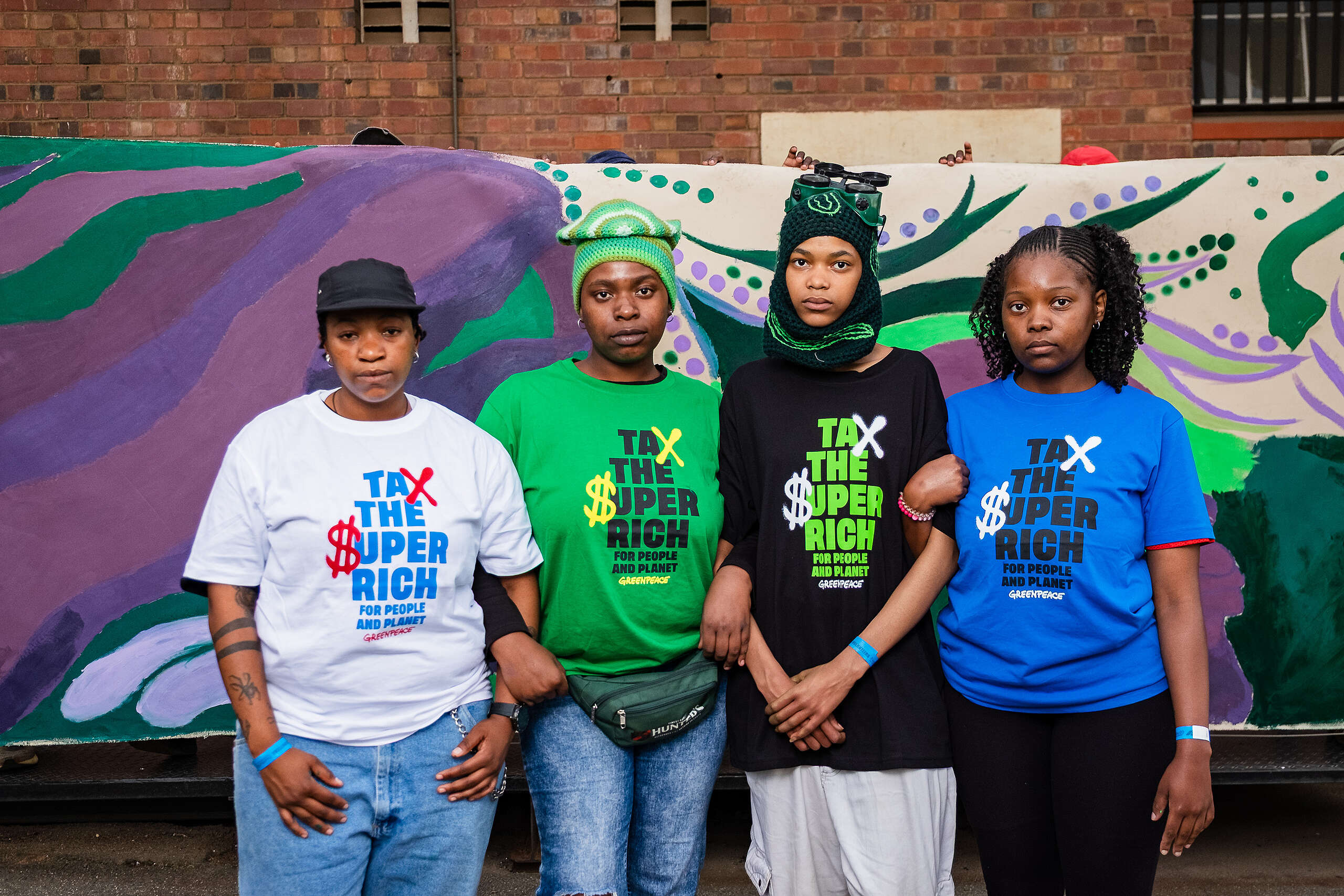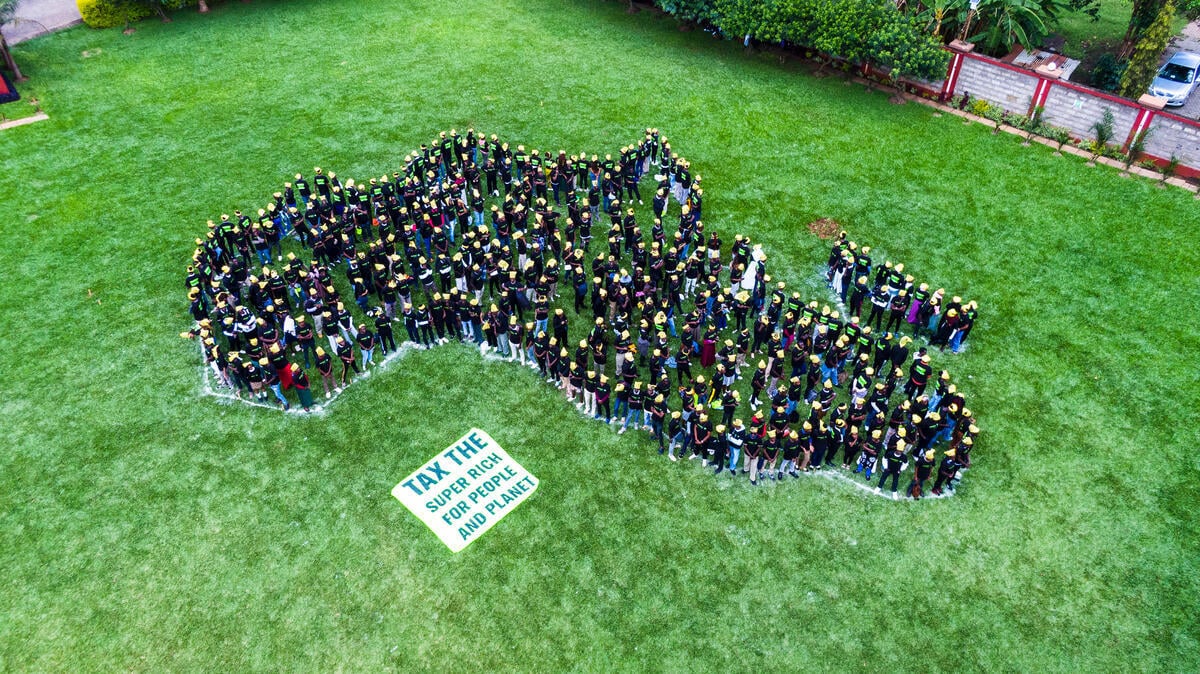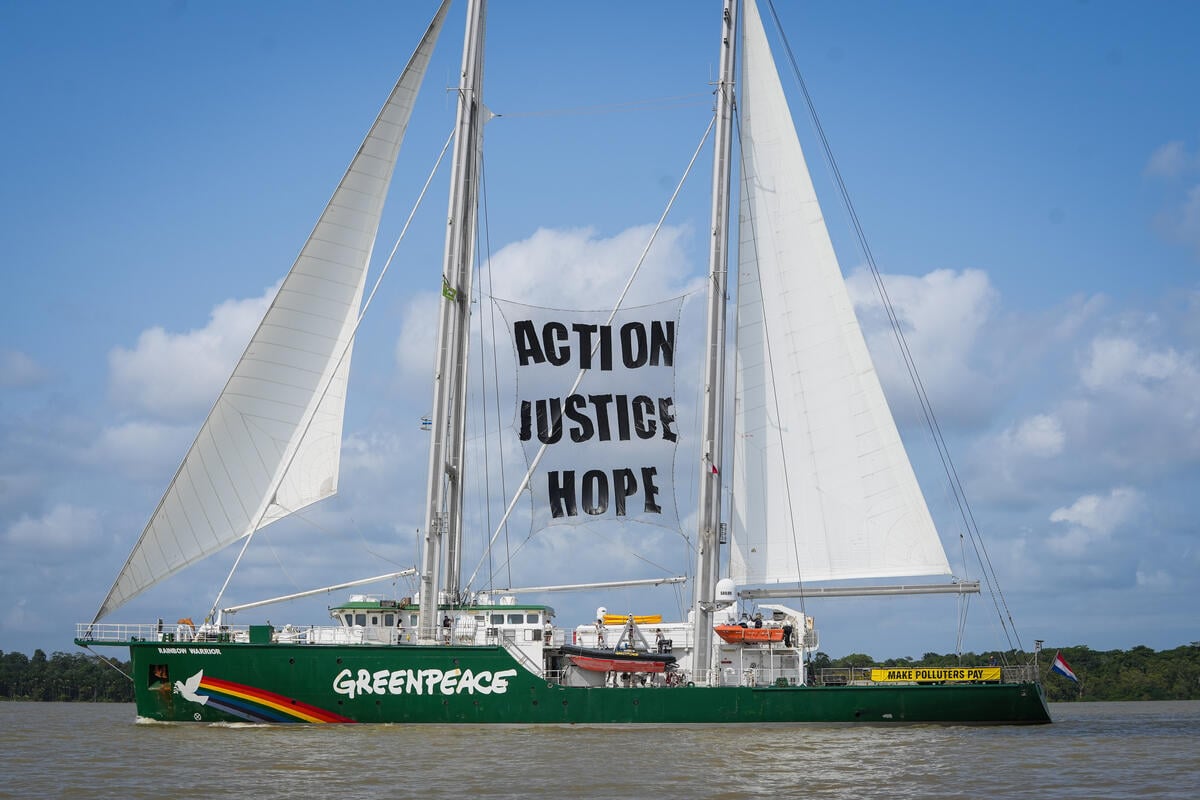For millennia, people have been living in cities. Throughout human history, cities have been at the centre of great strides in technological and societal development, creating communities and advancing culture, science, and trade.
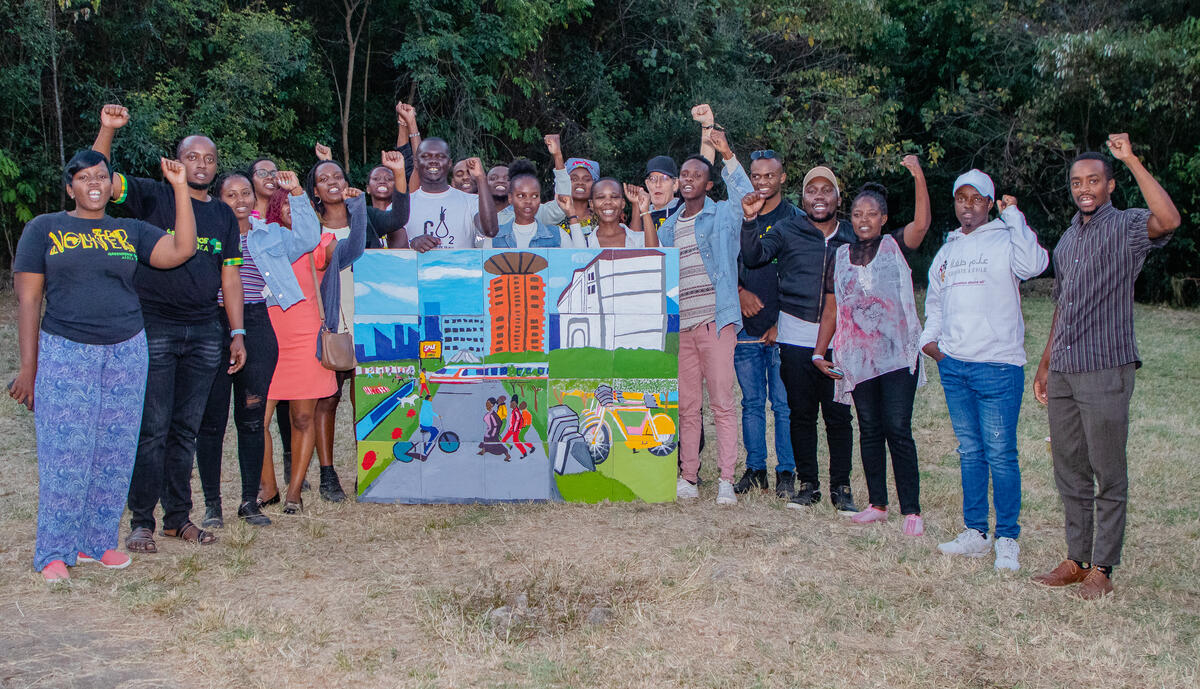
Cities come in all shapes and sizes, but the notion of collective resilience and wellbeing for the majority of the population has always underpinned their very foundations. However, as cities are often a nexus for decision-making and societal advancement, they have also become the places where the inequities and disparities in society are the most clear, with certain sections of the population excluded, marginalised and vulnerable.
As the climate emergency intensifies, the role of cities will become increasingly important, both as protectors of large numbers of people -particularly the most vulnerable- and as catalysts for the move towards the cleaner, safer, and more sustainable world we need to see. This can only be done if we lean into our communities for collective strength, to work together to achieve urban justice.
Cities for Hope
As part of Greenpeace International’s Urban Justice campaign, an Opinion Poll was conducted in seven major cities across the Global South. This was done to better understand the common lived experience of different populations, how they envisioned a better city, as well as their major concerns regarding life in their city.
While the respondents came from different regions across the globe, including South America, Africa, MENA and South East Asia, one thing was clear: a sense of hope.
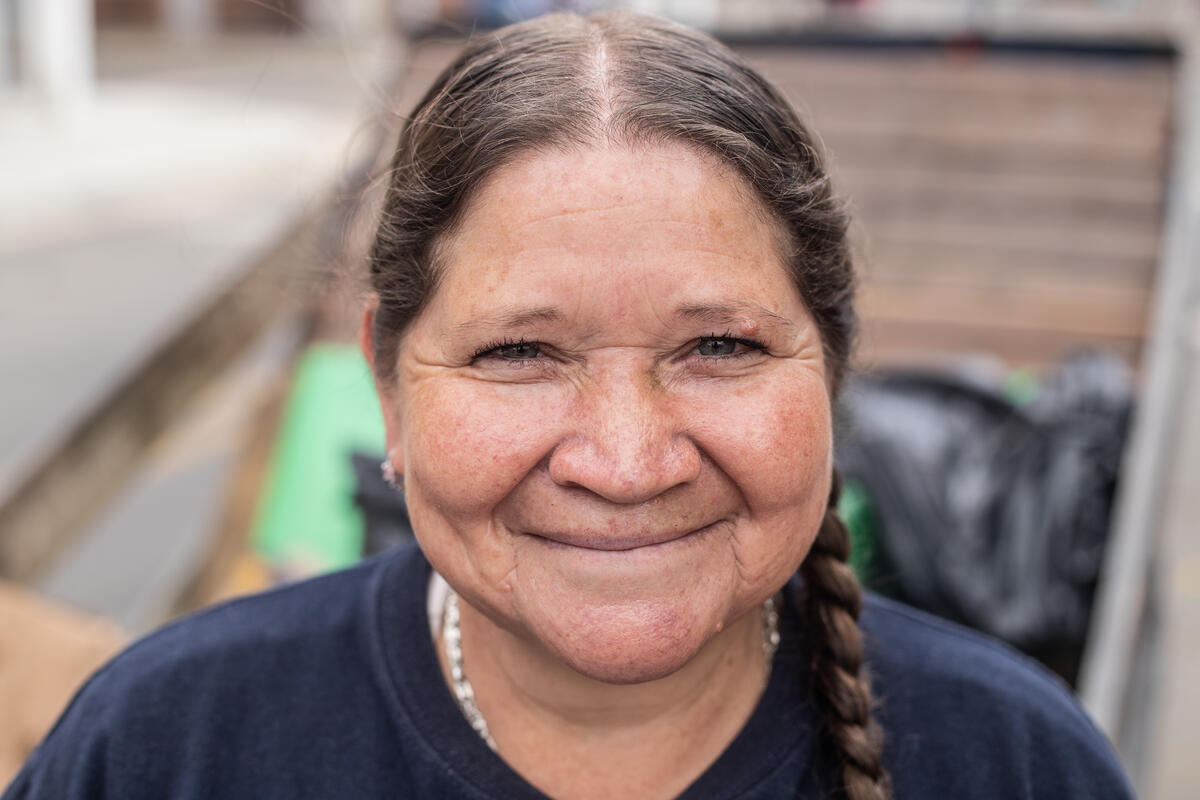
Despite the myriad of daily challenges faced, over half of the people polled (56%) are optimistic about the future and believe that their current city could become their “dream city”.
This does not mean that they are unaware of the shortcomings of their city, or the deep structural problems that exist. Rather, there is a strong, clear and collective belief in most cities that positive change is possible.
For example, when respondents were asked to describe their ideal or perfect city, the emergent themes were common across the world: clean air, clean water, easy access to education and medical treatment, along with safe, green spaces to connect with nature.
As one of the respondents from Nairobi, Kenya put it: “I believe that a good city would be friendly, inclusive and environmentally friendly. It would be a place where everyone can feel welcome and valued, regardless of their background. The people of a good city would have a sense of cooperation and commitment.”
Residents in Nairobi were the most optimistic in the poll with 91% believing that the city could become their “dream city”.
A Clear Path Forward
Daily struggles such as commuting via public transport are exacerbated by problems such as traffic congestion in many Global South cities, which in turn impacts air pollution and CO2 emissions. In the case of a recent initiative in Delhi, India, where women commuters are given free access to public transport, Haseena, a 43-year-old single mother from explains that due to discrimination, often the predominantly male bus drivers will not stop for women waiting at the bus stops. However, like many urban residents, communities have solutions to offer and Haseena’s is as simple as it would be effective: employ more female bus drivers.
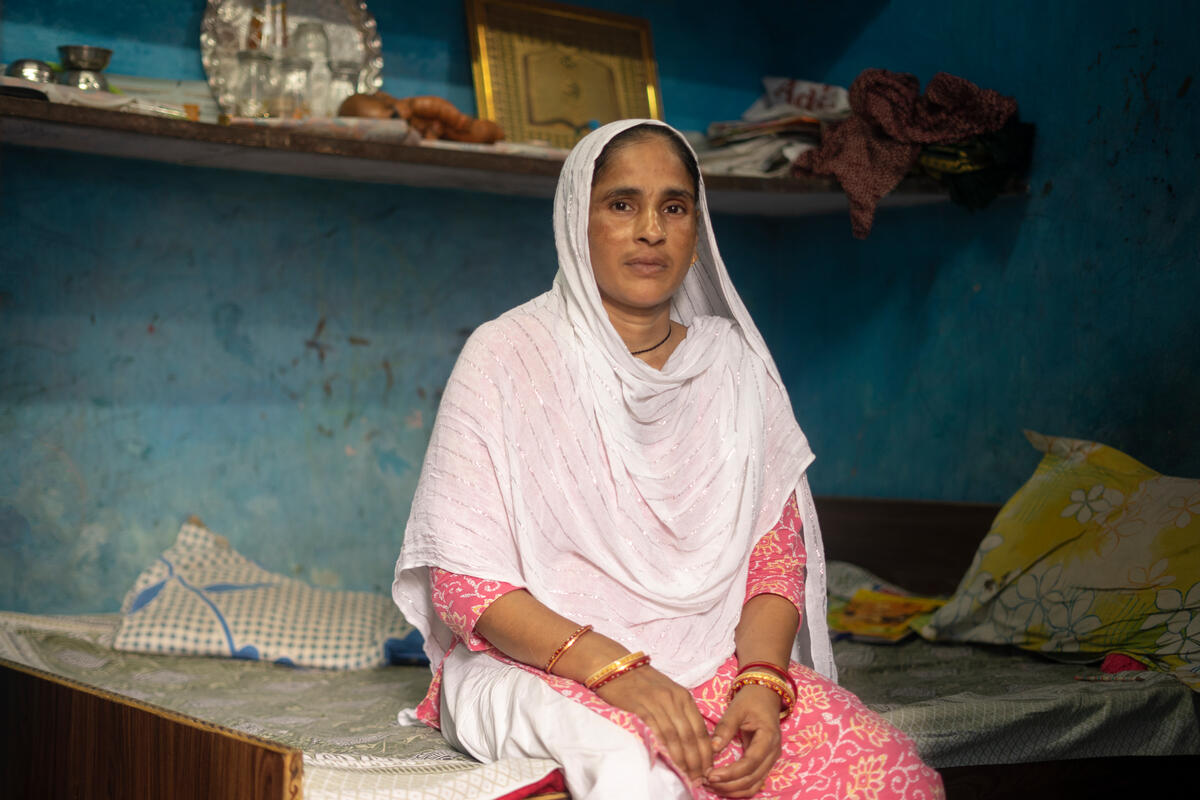
In the seven cities polled, the responses on what constituted the biggest problems -and who was primarily responsible for addressing them- were relatively uniform in nature despite the geographical differences.
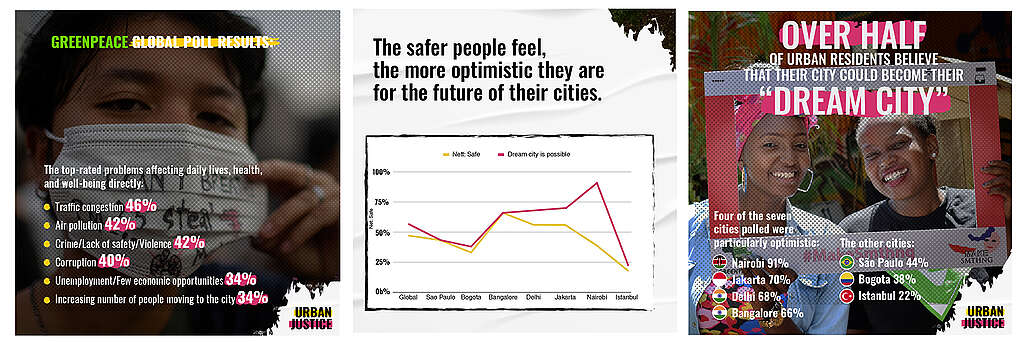
This is because people simply want to live healthy, safe lives.
At the same time, as extreme weather events are becoming more intense and frequent , less than half (47%) of the residents polled feel safe from these events in their cities. Again the notion of climate justice and the reality of living with multiple, intersectional crises is glaringly evident, particularly for those living in the Global South.
A call for #UrbanJustice
Across the globe, communities that have historically been excluded are facing the brunt of the climate and social crises. It is imperative, if we are to achieve clean, safe, resilient cities for all, that we include everyone in every step of the way, especially the marginalised and traditionally underrepresented. It is only through collective co-creation and the adoption of urban, social and climate justice principles that cities in the Global South will thrive in the years to come. This is again evident in the poll whereby higher income residents in five of the seven cities felt safer from extreme weather events than lower income residents.
You cannot put a price on human life and income should not be a determining factor during the climate crisis. After all, cities bring people together, but communities bring them to life.
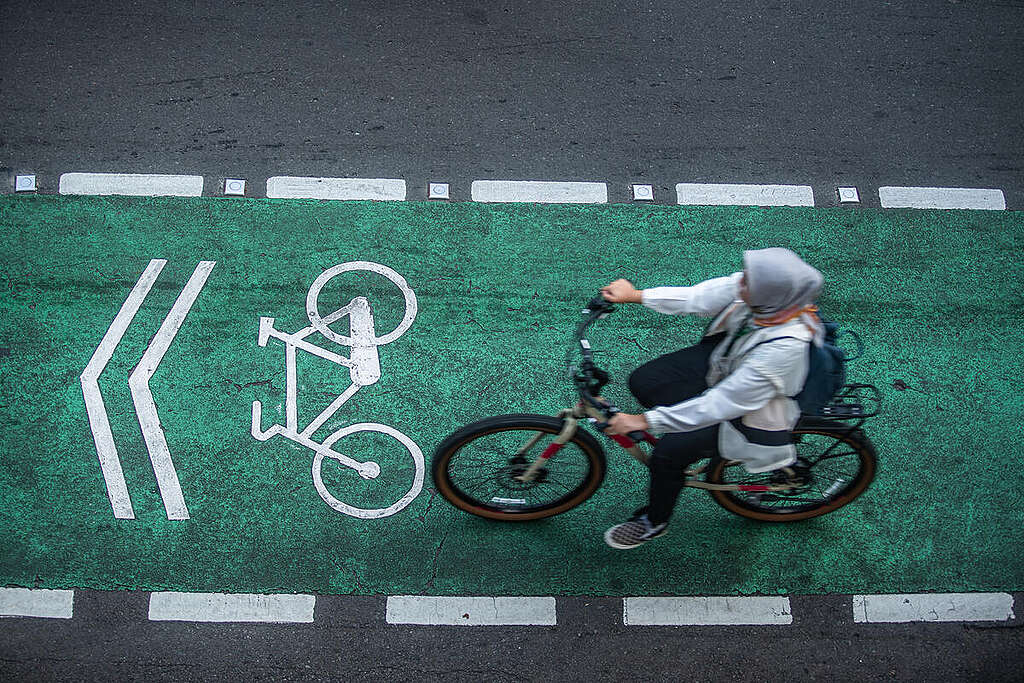
Urban Justice is addressing a global crisis from its local perspective by placing life in the centre of cities.
Learn moreHendri Pelser is a Global South citizen and a senior campaign analyst at Greenpeace International.

